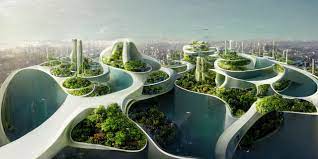
In an era where the boundaries of exploration and sustainability are constantly being pushed, designing for unique locations has emerged as a critical frontier for architects, engineers, and visionaries. This comprehensive exploration delves into the intricate balance of innovation, environmental stewardship, and human adaptability required to thrive in some of the most extreme conditions imaginable—underwater, in deserts, within polar regions, and beyond Earth in space.
Underwater Habitats: Exploring the Aquatic Frontier
The ocean, covering over 70% of the Earth’s surface, remains one of the final frontiers for human exploration and habitation. The ambitious Proteus Underwater Research Station, envisioned by Fabien Cousteau, represents a leap forward in underwater living. Unlike its predecessors, Proteus combines state-of-the-art design with sustainability, featuring renewable energy sources, sophisticated life support systems, and accommodations for long-term research missions. This habitat aims not just to advance scientific understanding but also to showcase the potential for sustainable underwater communities.
Desert Innovations: Cultivating Sustainability in Aridity
Deserts offer a unique canvas for designers to address challenges of extreme temperatures, water scarcity, and ecosystem preservation. The Sahara Forest Project exemplifies this by turning desert landscapes into verdant agricultural land through innovative water management, renewable energy, and climate control technologies. This project not only demonstrates the feasibility of sustainable desert agriculture but also presents a model for combating desertification and fostering economic growth in arid regions.
Polar Exploration and Design: Thriving in the Cold
The inhospitable polar regions demand designs that can endure extreme cold and isolation while minimizing environmental impact. The British Antarctic Survey’s Halley VI Research Station showcases modular architecture on ski-based legs, allowing it to be relocated in response to ice movements. This facility underscores the critical role of design in supporting polar research, with its energy-efficient systems and adaptive structure ensuring both the safety of its occupants and the protection of the fragile polar environment.
Space Exploration Initiatives: Designing for the Cosmos
The ultimate challenge in unique location design lies in space, where microgravity, radiation, and the psychological impacts of confinement present complex hurdles. MIT’s Space Exploration Initiative is pioneering this field with projects that range from developing new food systems for space travel to designing habitats that can assemble themselves in microgravity. These efforts are not only expanding the possibilities for human life beyond Earth but also democratizing access to space exploration, inviting a diverse range of perspectives to contribute to this next chapter of human achievement.
Expanding the Human Experience
Across these environments, the goal extends beyond mere survival; it’s about creating spaces where humans can not only live but thrive. This involves considering not just the physical design but also the psychological and social aspects of life in extreme conditions. Whether it’s underwater, in the desert, the polar ice, or outer space, these designs prioritize sustainability, resilience, and the well-being of their inhabitants.
Commonly Asked Questions by Freelancers
1. How can freelancers contribute to projects in extreme environments?
Freelancers can offer specialized skills in design, engineering, environmental science, and other relevant fields. With the growth of remote collaboration tools, they can contribute to global projects by providing consultancy, design proposals, and remote support for data analysis and project management.
2. What skills are most in demand for designing in unique locations?
Skills in sustainable design, renewable energy technologies, environmental engineering, and innovative construction methods are highly sought after. Additionally, the ability to work in interdisciplinary teams and think creatively to solve complex problems is crucial.
3. Are there opportunities for remote work in these fields?
Yes, many aspects of designing for unique locations can be supported remotely, from initial concept and design phases to simulations, project management, and data analysis. Advances in communication technology have made it easier for freelancers to collaborate with teams around the globe.
4. How can freelancers stay updated with opportunities in these niche areas?
Networking is key. Joining professional associations, attending conferences (virtually or in-person), and participating in online forums and social media groups can provide valuable insights and connections. Subscribing to specialized publications and staying engaged with leading research institutions can also offer leads on projects and collaborations.
5. What challenges do freelancers face when working on projects in extreme environments?
Freelancers may encounter challenges such as dealing with the logistical complexities of remote projects, ensuring clear communication across time zones and cultures, and staying abreast of the latest technologies and methodologies in these rapidly evolving fields. Additionally, the specialized nature of these projects may require continuous learning and adaptation to new tools and concepts.
Conclusion
The endeavor to design for unique locations is more than a testament to human ingenuity—it’s a reflection of our commitment to pushing the boundaries of what’s possible. As we venture into the unknown, the fusion of creativity, technology, and sustainable design principles opens up new possibilities for the future of human habitation and exploration. For freelancers, this frontier offers a realm of opportunity to contribute to groundbreaking projects that not only challenge our capabilities but also promise to expand our understanding of living in harmony with the natural world and beyond.
